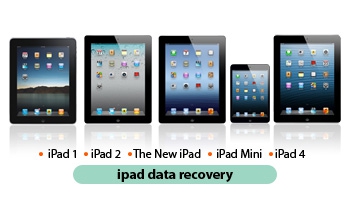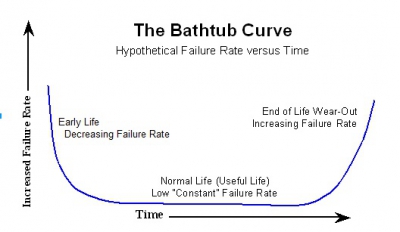- Home
- About Us
- Recovery Services Individual RecoveryEnterprise RecoveryAdditional Recovery
- Software
- Testimonials
- Locations

Data Recovery (125)
 Any recovery of lost data is quite a complex and long process. That is why, if data you store on your external media is important to you, make sure to backup it to your computer, or, event better, write it to CD or DVD disk and keep it in a safe dry place.
Any recovery of lost data is quite a complex and long process. That is why, if data you store on your external media is important to you, make sure to backup it to your computer, or, event better, write it to CD or DVD disk and keep it in a safe dry place.
Any electronic device does not last forever, plus there is always a human factor. There is always a chance of unpleasant situation when you or someone else accidentally deletes an important information.
So here we will consider a situation when it is necessary to recover lost data from iPhone. First of all this device is very >specific and standard recovery methods are not always applicable to it. First of all you have to resort to tool recommended by the manufacturer.
To create an obligatory backup in form of an image or information snapshot, use iTunes is available on the official web-site of the manufacturer. Please remember that you cannot recover data with iTunes if there is no previous backup image (copy). When recovering with iTunes tools settings, audio and video recordings of the devices are being synchronized. To start the recovery process you need to select “Synch” option for the selected files list.
 If you lost important data that was stored on your iPad, you, perhaps, are ready to give anything to recover it back. Fortunately enough, information can be recovered in most cases. So, how is it done?
If you lost important data that was stored on your iPad, you, perhaps, are ready to give anything to recover it back. Fortunately enough, information can be recovered in most cases. So, how is it done?
Data recovery with Apple built-in tools
Unfortunately, iPad memory cannot be expanded with memory cards, that is why you won’t have to resort to data retrieval from memory card.
But if before data loss occurred, you connected your iPad to computer and performed synchronization with iTunes, consider yourself lucky: every synchronization on computer creates data back up copy from your tablet.
So, there is a copy and lets start with data recovery from iPad.
- Update iTunes to the latest version (preferably).
- Connect iPad to computer.
- Select your iPad in the Devices list.
- Go to Summary tab.
- Activate Recover option.
- Save (if necessary) back up of settings – Copy option.
- After iTunes pops up a request, confirm iPad data recovery from back up by selecting Recover parameter.
- Restart the tablet.
 It is hard to believe but so-called ‘not advanced users’ sometimes delete important data and then noisily regret it. And then programmers have to deal with their problems. That is why now we are going to find out how Mac OS X stores data on drives and how these data can be recovered.
It is hard to believe but so-called ‘not advanced users’ sometimes delete important data and then noisily regret it. And then programmers have to deal with their problems. That is why now we are going to find out how Mac OS X stores data on drives and how these data can be recovered.
Intro
Apple has developed its own file system for Mac – HFS (Hierarchical File System). Recently it was replaced with HFS+, that is used in Mac OS starting with version 8.1. The structure of a volume that uses HFS+ is close to HFS, though at the same time it contains some differences.
Main features of these two systems:
Length of file name:
• HFS:31
• HFS+: 255
Filename encoding
• HFS: Mac Roman
• HFS+: Unicode
Catalog node
• HFS: 512 bytes
• HFS+: 4 Kbytes
Maximum size of a file
• HFS: 2^31
• HFS+: 2^63
As you can see, HFS+ was created to more effectively use disk space for large size volumes and fragmented files.
 Introduction
Introduction
Drives on hard megnetic disks slowly leave the scene of data storage media, but they still represent the biggest capacity at the cheapest price. Traditional hard disk drives work not as fast as SSD. But there are many simple ways of enhancing its performance and longevity. And if you have a solid-state drive installed in your computer, then you won’t need to increase its speed, but there are still ways of increasing data storage reliability. This article contains different tips and hints as well as description of utilities that will help to get maximum from your HDD and SSD!
Optimization of HDD: partition your drive
One of the most common tips regarding convenience of working with traditional magnetic hard disk drive – partition it. Partitioning has many benefits, for example, OS files can be stored regardless of all other data (thus, software installation will be clearer and with less risks for other data on hard disk drive), swap file may be located separately (which decreases probability of occurrence of system errors), you may also install two operating systems (for example, Windows 7 on one partition and Linux on the other), etc.
Windows operating system has a built-in disk partitioner and you can use it at the beginning of installation process. At the end of this article we will also list out several proprietary utilities that will help optimizing your hard disk drive and avoiding data loss.
 Even if the probability of problem is one in a million, everything would go wrong exactly when you expect it least. A bright example of such situation is a data recovery plan. Even a good data recovery plan can collapse due to a single small error. Below are the 10 problems and solutions you might face with data recovery plan.
Even if the probability of problem is one in a million, everything would go wrong exactly when you expect it least. A bright example of such situation is a data recovery plan. Even a good data recovery plan can collapse due to a single small error. Below are the 10 problems and solutions you might face with data recovery plan.
1. Bad backups. There is nothing worse than to find out during the recovery that your backup cannot be read. When computers are used 24/7 it is difficult to make goo backups. Many apps do not work with backup software. Sometimes backups are stored inappropriately. There are problems with extra difficult backup applications that operate incorrectly. Plus hardware problems. The totality of these factors makes bad backups a reality. Only regular monitoring of the backup system and testing of backups can guarantee that backups are safe, readable and ready to use on demand. Bucking up should be on the top list of your IT requirements.
2. No recovery system. Backups are useless if you don’t have a way to start recovery system (for example, with live CD or any other way). You should face this problem while launching the recovery process. Recovery system should always be within easy reach.
3. No post-testing. Why recover the system if a day or two after you get the same problems? If the problem is associated with the system or applications, its reasons might be in backups (for example a virus). After performing backup you should check the operability of the system and applications as well as find out whether a specific issue, that pushed you to recover data, was eliminated. Initial testing should be carried out in advance, be clearly documented and its results should be saved. Second, as a rule, is done on the go and is determined depending on the situation.

Since we’ve been on a security kick this week, I thought we might end the week with one of the most important things you can do to keep your accounts secure: Two Factor Authentication.
What exactly is two factor authentication? Also called ‘multi-factor authentication’, according to wikipedia, it is a means of authenticating that requires 2 or more factors to be able to access an account. These factors can be:
A physical factor (bank card, key card, usb stick, etc)
A knowledge factor (password, pass phrase, pin)
An inherence factor (biometrics: fingerprint, iris scan, voice scan, etc)
While this sort of two-factor authentication might seem like something needed for access to places much more important than your email account (like say, a bank vault or secure government facility), you may have been using two-factor authentication without even knowing it.

It’s been nearly a year and a half since our last blog about data recovery myths. We gave you 15 myths that most people believe in regards to data recovery and data loss. While you are likely not planning on becoming a data recovery professional, a basic understanding of how data recovery works can help you understand what is, and what isn’t, necessary when it comes to data recovery. Hopefully by now, you understand that data recovery is not something only for businesses and people with too much money. Data recovery can be affordable, and necessary, for everyone. If you don’t understand how data recovery works, you could potentially find yourself overpaying for service, or not understanding why a price is reasonable for your data recovery case.
 At some point, we’ve all heard of the Bell Curve, which usually has to do with some smarty-pants in your class getting such a high grade that everyone else has to work harder. But did you know, there is a curve for talking about the life of your hard drive?
At some point, we’ve all heard of the Bell Curve, which usually has to do with some smarty-pants in your class getting such a high grade that everyone else has to work harder. But did you know, there is a curve for talking about the life of your hard drive?
The Bathtub Curve is designed to talk about all product failure. Of course, since the subject matter is failure rate, this often is used to talk specifically about electronics. Much like the Bell Curve looks like a bell, the Bathtub Curve looks like a bathtub basin.
On one side, we have the beginning of life for a product where the failure rate is high, but decreases at a very rapid rate. Electronics that fail at this point in the ‘life cycle’ are usually caught before they reach consumers - ie, you. These product failures would be caught during the testing phase of manufacturing.
In the middle, we have the lowest level of failure. This is during the normal lifespan of a given product. This is the time that consumers (you) are using the product. The rate of failure is at the lowest point in a device’s lifespan. This is by far the longest time span during the device’s life cycle.

We all know how horrible it is to lose data. Whether it’s due to an error with the hardware or a PEBKAC Error, the end result is the same (though some data loss causes result in more hair loss than others.) I will admit that I have accidentally formatted computers without backing up first, and lost pictures that could never be replaced. Of course, that was many, many years ago, and that hard drive is long gone.
While we can recover your lost files, no matter what the cause of the loss was, understanding what causes file loss can help you avoid losing critical data. There are four main categories of data loss: Hardware Malfunctions, Environmental Factor, Software Error or Corruption, and Human Error.
Copyright © 2024 DataRecoup Recovery Services. All Rights Reserved. Designed by DataRecoup Lab.


